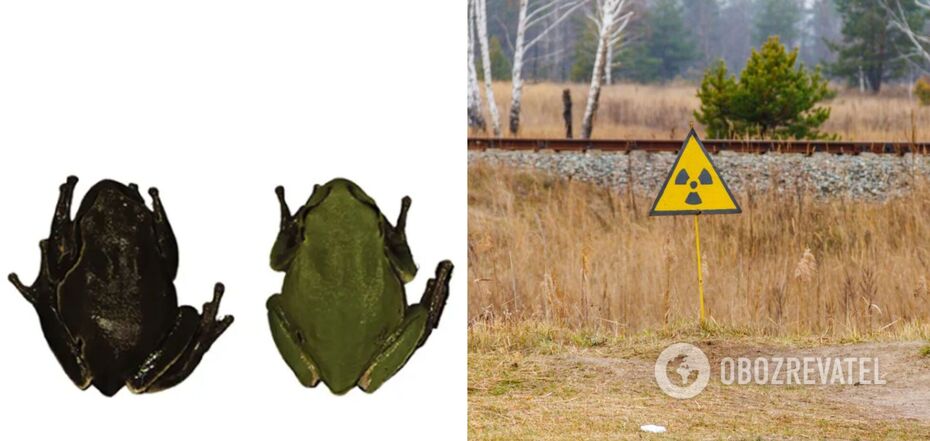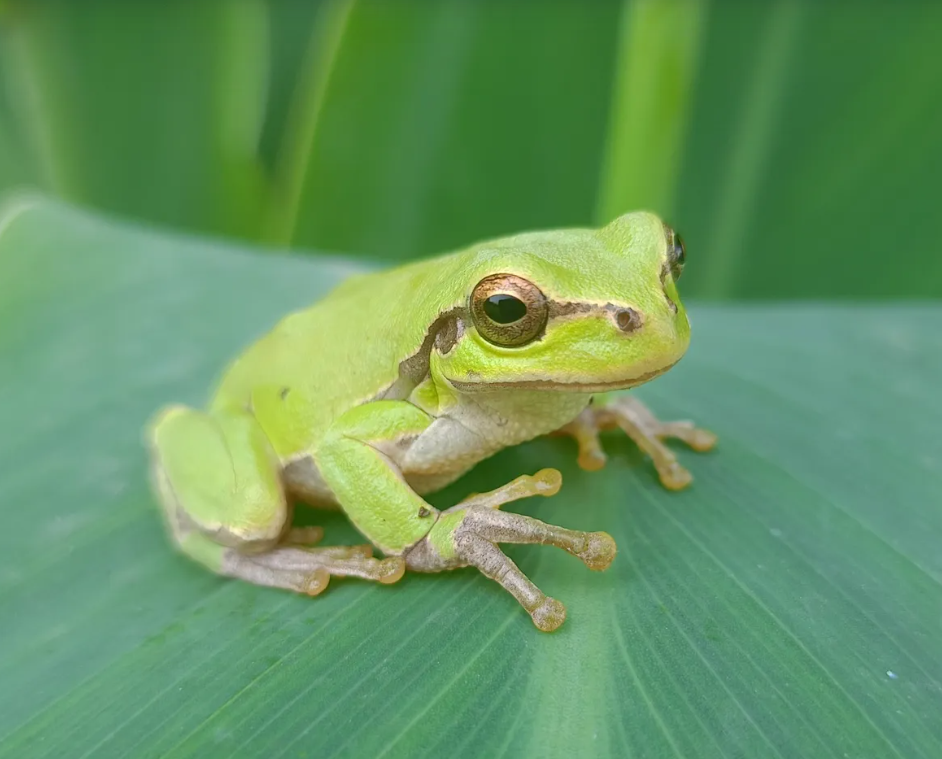News
Frogs that mutated to protect themselves from radiation found in Chernobyl. Photo
In the Chornobyl zone, scientists have found frogs that have mutated to protect themselves from radiation. Researchers came across several such individuals back in 2016.
These are, in particular, eastern tree frogs. The researchers believe that this was possible due to the rapid change in skin color, IFLScience reports.
Eastern tree frogs (Hyla orientalis) are usually bright green, but 8 years ago, a team of researchers working in Chornobyl came across several individuals with black skin. Later, the scientists returned to study the population in detail, spending three years studying more than 200 male frogs caught from ponds both in the Chornobyl Exclusion Zone in northern Ukraine and beyond.
The team found that the frogs found in the exclusion zone had a darker back skin color than frogs from outside the zone. According to scientists, the amphibians' skin darkened to protect them from radiation.
The skin of darker frogs contains more melanin. It is this substance that leads to darkening of the skin and hair, and can also protect against radiation, including ionizing radiation, which was detected in Chornobyl.
"Dark coloration is known to protect against various sources of radiation by neutralizing free radicals and reducing DNA damage, and melanin pigmentation in particular has been proposed as a buffering mechanism against ionizing radiation," the researchers wrote in their 2022 article.
The frogs' skin color was darkest in the areas closest to the explosion, where radiation levels were high at the time of the disaster. Scientists speculate that high levels of ionizing radiation may have caused the dark coloration.
The frogs with less melanin were probably more vulnerable to DNA-damaging radiation, which allegedly killed them at an earlier age, perhaps even before they could reproduce. On the other hand, frogs with darker skin were more likely to survive and give birth to many froglets due to their protective melanin, and this trait was passed on to their descendants.
Eastern tree frog females begin to reproduce at the age of 2-3 years. Almost 40 years have passed since the Chornobyl disaster, which equates to about 10-15 generations of frogs at the time of the study. So, this is a really fast evolutionary process.
Scientists hope that future studies will help unravel the genetic mechanisms of the dark coloration of Chornobyl tree frogs, as well as establish other possible consequences of long-term exposure to ionizing radiation on wildlife.





























